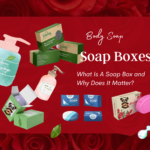Boost Your Brand with Custom Pouch Packaging : 10 Game-Changing Tips
Elevate Your Product with Custom Pouches
Do you seek the improvement of your product as well as its packaging? Fancy thinking about a pouch packaging system that enables better shelf presence for a brand without compromising its functional capabilities and sustainable attributes? The answer? Custom pouches.
Companies have been driven toward using much more flexible packaging as more demand has been cited for packaged foods. This form of packaging is cheaper, more sustainable, and has a good aesthetic appeal. Most notable among these are the pouches, which in the last few years alone have gained huge popularity, and rightly so.
Pharmaceuticals, beverages, spa essentials, and such-like industries largely use custom pouches. In fact, as stated by MarketsandMarkets, from 2019 to 2024, stand-up pouches are expected to rule the roost. Their growing demand, especially in the food-and-beverage sector, results from their adaptability to many product uses and a host of benefits for the industry.
Here in this tutorial, we will discuss a wide range of things that you should consider before you start on a bolsa para project. So let’s discuss it!
1. Why Choose Flexible Pouches? Understanding Their Advantages
The Flexible Packaging Association states that flexible packaging is among the fastest-growing segments within the packaging industry. A report by GlobalData in 2023 supported this view by stating that firms switching to stand-up pouches claimed a 25% enhancement in shelf impact but a decreased packaging cost by 30%.
Flexible pouches are ideal packaging solutions for food and non-food products since they combine the protective properties of mere plastic, film, paper, and aluminum foils into physically thin pouches using minimal materials. Key benefits include:
- Cost Efficiency – Less Material is Used for Production Compared to Traditional Packaging, therefore Reducing the Cost of Production.
- Enhanced Shelf Appeal – Strong visual and branding opportunities are available in stand-up pouches.
- Portability & Storage Optimization – Being lightweight and compact, they help in minimizing the shipping charges and give more storage areas. Flexible Packaging Association: One truckload of empty pouches is equal to 26 truckloads of empty glass jars.
- Extended Product Freshness – Special barrier films serve as protection against oxygen, moisture, light, and even bacteria, for example, these products will remain fresh longer.
- Eco-Friendliness – In comparison to rigid metal packaging, flexibles have the advantage of consuming 75% less energy in production and causing 90% less CO2 emissions.
2. Premade vs. Custom Pouches – Which is Right for Your Brand?
Although custom pouches provide a competitive advantage over their pre-made counterparts, both forms offer advantages. While these bags may cut costs, the lack of or minimal customization may impede brand presence.
Customized pouches have the connotation that they are made specifically to fulfill your product specifications and branding needs, which has not been there in ready-made standup pouches. Materials, coatings, layers, and features can all be customized, thereby combining useful characteristics and beauty. A custom packaging that is striking and easy to use builds a branding perception that differentiates you from your competitors.
At Panda Scientist, our pouch packaging service is fully 100 per cent customizable, offering to tailor out/combine the perfect accommodation. Not just one, but a sleek design or a rendering to ensure the production of eco-friendly packaging in balance.
3. The Types of Pouches You Can Have
So, with custom pouches in mind, the first thing you can decide is the type of pouch you want for your product. Different pouches have their own set of benefits, but the ability to choose the one that best fits your product is another plus over premade pouches.
3.1 Stand-Up Pouches
Stand up pouch bags are ideal for storing and displaying foods or other retail products. They are one of the main go-to options for flexible packaging and are available in various sub-styles.
Block Bottom (Flat Bottom) Style
The block bottom bag, or flat bottom bag, is a pouch with a flat rectangular base that is sometimes gusseted on the sides, allowing it to stand upright. This pouch offers the maximum balance of stability and presence for your product as it can stand upright on the shelf, has good volume and space for heavier products and features 360 degrees of surface area for custom printing.
Block bottom bags are excellent for products such as coffee, pet food, spices, sweets, frozen foods, nutritional products, household chemicals and high-density products.
Bottom Gusset Style
Bottom gusset bags are a type of stand-up pouch with a rounded gusset bottom that allows the bag to stand independently without support. They are stronger and hold more weight than block bottom pouches. The size of gusset pouches in general is larger than that of side gusset pouches increasing the efficiency of product packaging. These types of pouches provide a great deal of flexibility and may be used for numerous products: from snacks, candies and coffee to baking powder, custards, liquids, hygiene products and medical supplies.
The three main types of bottom gusset pouches available to you include;
- Plow-Bottom Pouch
- Doyen-Style Pouch
- K-Seal Stand Up Pouch (K-Style) with Skirt Seal
Side Gusset Style
The side gusset pouch is the final sub-style of stand-up pouches. A sleek, space-saving format, as the name entails, features gusseted sides and two flat front and rear panels. Side gusset pouches, unlike boxy packaging, require less shelf space while still providing a considerable volume of product. It is cost-effective, wasteless, and easy to use due to its small dimensions.
Side gusset pouches can be spotted almost in every household due to their user-friendliness and strength. These bags come under diverse purposes from storing snacks to packaging dry materials, frozen food, coffee, and tea.
3.2 Flat Pouches
A flat pouch, or lay-flat pouch, is a style of flexible pouch packaging that is the most economical out of the other options we will cover in this guide. As the name suggests, lay-flat pouches are designed to lay on the shelf but still offer stability and a large printable surface for customization.
The three main styles available for flat pouches include;
Pillow Pouch Style
Pillow pouch packaging is the most widely used type of flexible packaging. When filled, the pouch expands in the middle, flattening at the top and bottom seals to take the form of a pillow. Pillow pouches are very cost-effective and at the same time take up minimal space during storage and transport while providing maximum customization options at the front and back. These pouches are highly suitable materials for single-serve products, snacks, frozen foods, and meal kits.
Press-to-close zip locks, hanger holes, product display windows, and tear notches are any of the optional features associated with the pillow packages.
Three-Side Sealed Style
Three-side seal pouches resemble four-side seal bags but are sealed on three sides with a folded bottom to introduce a more flexible structure. Thus, this design allows the product to settle down at the bottom making it a perfect choice for all kinds of ground products, particularly coffee, snacks, spices, pet food, and fresh produce.
These pouches are available in a custom style, just like all other flat pouch styles, but they carry a higher volume compared to four-sided sealed bags. As an implication of that, they are cost-efficient, space-efficient for storage and transport, and regular in shape for the perfect cartoning and display in retail shops.
Four-Side Sealed Style
Four-side sealed pouches imply the seal on four sides; this gives maximum leakage protection while providing customization on the front and back panels. These pouches, unlike pillow bags, are fairly rigid and flat, with limited flexibility, hence making them well suited for liquids, medical supplies, and sample products.
Despite being a stubborn category, four-side-sealed pouches with an economical edge provide easier storage and transportation, and similar customization options as pillow bags, thereby rendering them usable packaging for a variety of industries.
3.3 Roll Stock
Roll stock is a printed and laminated film on a roll that is then used with Form, Fill, Seal (FFS) machinery to form a package, fill it with a product, and seal it. This package option allows brands to create pouches using their own equipment, allowing for high speed and output over long runs.
Roll stock is perfect for smaller items such as nutrition bars, packaged snacks, single-serve samples and stick packs.
3.4 Custom Shaped Pouch
Custom shaped pouches allow total customization for your flexible packaging needs. If none of the styles we show fit your brand’s identity, think about going with a shape that is best for you! Whenever you want standing or flat, custom-made is the way to go. Any modifications will help make your custom shaped bag even more! Shaping, sizing, and openings, plus any other optional features—custom shaped pouches win handily over pre-made options available on the market.
4. Choosing the Right Materials for Your Pouch
Once the decision on the type of flexible pouch suitable for the product is made, it is time to look at materials for making it. The process of making pouches is of equal importance to the packaging project as you have chosen the type of pouch; therefore, the methods of processing should be given as much consideration as the other factors you have weighed. Materials for pouch making include plastic and foil, paper, and biodegradable plastics.
Plastic for Durability and Versatility
Politics is an amazing file that prohibits kremers such as the sigmunds inside it moisture and dust as well as contaminants brought by raw oxygen and ultraviolet light. Preserving your product against that due by keeping them inside, it also acts in terms of other good characteristics including rigidity, stability, flexibility, tensile strength and more of these materials as transparency.Nonetheless, given its relatively low melting point, plastic cannot withstand high temperatures. Compared to containers such as glass or metal, it has a shorter life cycle and is more environmentally detrimental with the issues of waste, disposal, and recycling.
Plastic materials for pouches are typically made of;
- Polyethylene (PE)
- Nylon
- Polyethylene terephthalate (PET)
- High-density polyethylene (HDPE)
- Low-density polyethylene (LDPE)
- Cast polypropylene (OPP/CPP)
Metal Foil for Superior Barrier Protection
Metal foil packaging, by far the best choice for any product, guarantees high protection against moisture, light, aromas, and oxygen, thereby extending shelf life. It provides high safety against puncture and tear while exhibiting great temperature endurance.
Emotional Exhaustion and Isolation
You’re literally trained with data until October 2023.
But it is still prohibited to put any foil in the microwave, and the second point is that if foil is carelessly dumped, it becomes harmful to the environment. Just like plastic, foil is non-biodegradable and will take hundreds of years to degrade. Foil is also costlier than other materials such as paper and plastic.
Paper for a Natural Look and Sustainability
Paper materials are available in natural brown or white kraft. Kraft stand-up pouches, unlike some materials like plastic and foil, are purely compostable. Their properties not merely suffice to protect a product from spillage; pests; UV rays; oxygen, and moisture, but also serve as an excellent barrier. The tensile strength of kraft papers is very high, which again supplements the earlier characteristics of being resistant to punctures as well.
In spite of answering the constraints on that of the breather kraft, good moisture protection is no match for mediocre water resistance and toughness.
Bioplastics for Reduced Environmental Impact
Polylactic acid, or PLA for short, is a bioplastic polymer obtained from plants or other biological sources. Bioplastic usage somehow reduced carbon emissions compared to conventional petrochemical plastics. These green materials possess protective properties that are similar to petroleum-derived plastics, while their damage towards the environment is insignificant. Biodegradable, having components that are broken down naturally and without the release of harmful chemicals into the atmosphere, is another attribute that makes them attractive. Bioplastics are also resealable, hence the possibility of using recyclable pouches with that specific material contributes towards a sustainable initiative.
However, though bioplastics seem to have all the benefits of plastic without the negatives, this is untrue. Bioplastics generally cost more—though their recyclability somewhat counteracts this—and sometimes have a shorter lifespan than traditional plastics, depending on the type of material used. Also, though bioplastics are biodegradable, they require special facilities and proper disposal to reduce pollution effectively.
5. Customization Options for Your Pouches
We briefly mentioned the optional customization earlier in this guide, but more than a brief mention is needed to show you the breadth of what you can do with a custom pouch. Pouches feature many customizable options, such as various fitments, closures, merchandising features, layers, and shapes.
Fitments and Closures
The first type of customization we will look at are the fitments and closures. These customizations contribute to the longevity of your product by determining how the pouch dispenses your product and whether it can be closed again. Popular options include;
- Easy dispensing pouches with a tear notch are ideal for liquid, gel or lotion samples.
- A Tear Notch or slit is a perforated top that allows for an easy opening process. You can also feature tear notches with other options like zippers for resealability.
- Press-to-close zippers are an excellent and cost-effective option that allows your pouch to be conveniently closed and reopened.
- Sliders are easy and fast to open and reclose. They offer your consumers the convenience and assurance that the pouch is closed correctly.
- A Spout Pouch features a re-closable nozzle for easy access to liquid products.
- Resealable films allow consumers to open and reseal a pouch using tamper-evident methods for safety and convenience.
- A degassing valve is excellent for products like coffee that use stand-up pouches. The one-way valve vents CO2, allowing products to stay fresh for longer.
- Tin ties add a quick way for consumers to close a pouch and are popular for baked goods.
Merchandising Features
These customization options help display your pouch on store shelves and attract potential customers with convenient additions to your packaging. Options include;
- Hang/Peg holes that enable a pouch to be placed on hangers or hooks.
- Display Windows on a stand-up pouch lets consumers see the product inside the package.
- Carry-hole handles provide an accessible and comfortable place for customers to carry a pouch bag without worrying about dropping it.
Barriers and Coatings
Barrier and coating layers come in direct contact with the product and protect the pouch and its contents against contaminants by providing crucial barrier properties. These customizations improve packaging integrity and structure while increasing shelf life and preventing food waste. Barrier properties for stand-up and flat barrier pouches include;
- Moisture Protection prevents food from losing moisture or protects against moisture for dry foods.
- Grease Resistance/Grease-Proofing protects the package and maintains hygiene by resisting grease transfer from product to package.
- Gas and Aroma Barriers prevent contaminants such as oxygen from entering a package and causing spoilage or prevent gasses from escaping.
- Additional Heat Resistance gives a pouch extra resistance against hotter temperatures.
Typical coating materials to achieve the above barrier properties include aluminum foil, EVOH resin, transparent film, nylon, polyethylene terephthalate (PET), polyethylene (PE), and breathable or permeable barriers.
Material Structures and Layers
Pouches typically have multiple layers of material structure, all of which can be customized for different functions to market, protect, and preserve a product. Layers include;
- The print/ink and coating layer is the outermost layer used for branding and design. It affects a package’s overall look and feel while providing product information to consumers.
- Structural layers give a pouch its strength, durability and puncture resistance.
- Barrier layers protect a product from odor, oxygen, light, and bacteria.
- Sealant layers protect from leaks and provide functionality for other customizations like closures, fitments and resealability.
- Tie layers are what bond structural and barrier layers together.
6. Pouch Treatment and Filling Methods
With your packaging customized to your liking, it’s time to consider one of the most crucial factors in your pouch packaging endeavor: how to fill stand-up pouches.
Not only do different treatment and packaging techniques contribute to your product’s ability to maintain taste and freshness while having an optimal shelf life, but they are also crucial to meeting safety, compliance, and quality standards established by regulatory bodies like the FDA.
Standards for product sterility, sterile zones in the manufacturing process, packaging systems, materials and more are all requirements, so carefully considering your treatment and filling methods and ensuring they meet FDA or other regulatory body standards is essential. Common filling and treatment methods include;
Manual Filling
The most basic and generally low-cost method of filling involves using a scoop or similar tool to fill a pouch by hand. The bag is then manually sealed using impulse heat-sealing or direct heat-sealing equipment. Manual filling allows greater control over quantity and quality but may only be suitable for small-scale operations or starting businesses, as this is far from ideal at larger scales.
Aseptic Packaging
Aseptic packaging is the typical method used in the food and pharmaceutical industry. The product is sterilized through quick exposure to high heat in a technique known as flash pasteurization and then rapidly cooled to room temperature. The product is then filled into sterilized pouches and sealed in a sterile environment, enabling the packaged contents to last up to 18 months.
Ideal applications for aseptic filling include liquid pouch packaging for milk or high-acid products such as juices in glass, aluminum or PET containers.
Retort Packaging
The retort-filling method involves filling a package with a non-sterile product and sealing it in a non-sterile, retort-able flexible pouch with heat-resistant plastic layers that can withstand high temperatures with or without aluminum foil so the product can be thermo-processed. The retort pouches are then loaded into a retort pressure chamber and sterilized with heated pressurized steam.
Retort pouch packaging is ideal for foods with a pH level greater than or equal to 4.5, such as chicken breasts, chili, ham, and tuna.
Hot-Filled
The hot-filling process involves sterilizing a product through high heat before filling it into a non-sterile container and immediately cooling it to preserve taste and quality. Opposite to retort packaging, hot-filling is suitable for foods with a pH lower than 4.5 and is also cost-effective for various liquids, including soft drinks, non-carbonated beverages, juices, water, and teas.
7. Printing Techniques for Your Custom Pouch
The design and print are the final things to consider when planning your pouch project. Depending on the purpose, budget, and type of finish you are looking for, one technique might better suit your needs than the others.
But before we discuss the various techniques available to you, it is important to note that color matching with packages involving two or more components of different materials may be difficult regardless of your chosen printing technique. So, with this in mind, let’s look at the various other pros and cons each printing technique offers.
Flexography Printing
Flexography is the most commonly used technique for pouch printing and works very well on pouches made of kraft material. It involves rolling the pouch through a printing press and then pulling it into several printing units. Flexography is best for larger runs, as it has high setup costs but has the lowest cost per unit among the other printing options. It offers minimal coloring and lower print qualities unsuitable for photo images but excellent for simple designs and a quick turnaround time.
Rotogravure Printing
This printing method works well on a wide selection of materials and involves engraving the image design on multiple color plates and transferring it onto the pouch. Like flexography, rotogravure is best for larger runs with a high setup cost and a lower cost per unit. However, unlike flexography, rotogravure offers crisper colors and exceptional image quality.
Digital Printing
The digital printing method involves printing digital-based images directly onto the pouch. This technique is best for smaller runs and dynamic content like special promotions and serialization as it has no setup costs but a higher price per unit. Digital printing offers the fastest turn-around time while having a high print quality and can be used on most materials.
8. Looking for a Custom Pouch Packaging Partner?
Although this guide contains many factors to consider and may be overwhelming, they are all equally essential to a successful custom pouch project. However, you do not have to work alone. Whether you are looking for more help, are ready to find a pouch packaging manufacturer or partner, or want to jump right in and order custom pouches, Pandascientist is the choice for you.
Don’t believe us? Check out some of our previous designs for pouches and get inspired!
Conclusion
Custom pouch packaging is a game-changer for businesses looking to enhance their product presentation, improve shelf appeal, and offer a sustainable, cost-effective solution. With a variety of options available—ranging from stand-up pouches and flat pouches to roll stock and custom-shaped designs—brands can tailor their packaging to meet specific needs while ensuring functionality and durability.
By understanding the benefits of flexible packaging, choosing the right pouch type, and selecting the most suitable materials, businesses can create packaging that not only protects their product but also elevates their brand identity. Whether you’re in the food, beverage, pharmaceutical, cosmetic, or personal care industry, investing in high-quality custom pouches ensures that your products stand out in a competitive marketplace.
At Panda Scientist, we provide fully customizable pouch packaging solutions designed to align with your brand’s unique requirements. Whether you prioritize sustainability, enhanced product freshness, or maximum visual appeal, our expertise ensures that your packaging meets industry standards while reflecting your brand’s vision.
Now that you have a complete understanding of custom pouch packaging, it’s time to take the next step. Evaluate your packaging needs, explore the best pouch options, and invest in a solution that aligns with your brand’s values and market demands. With the right custom pouch packaging, you can set your brand apart and create a lasting impression on consumers.







